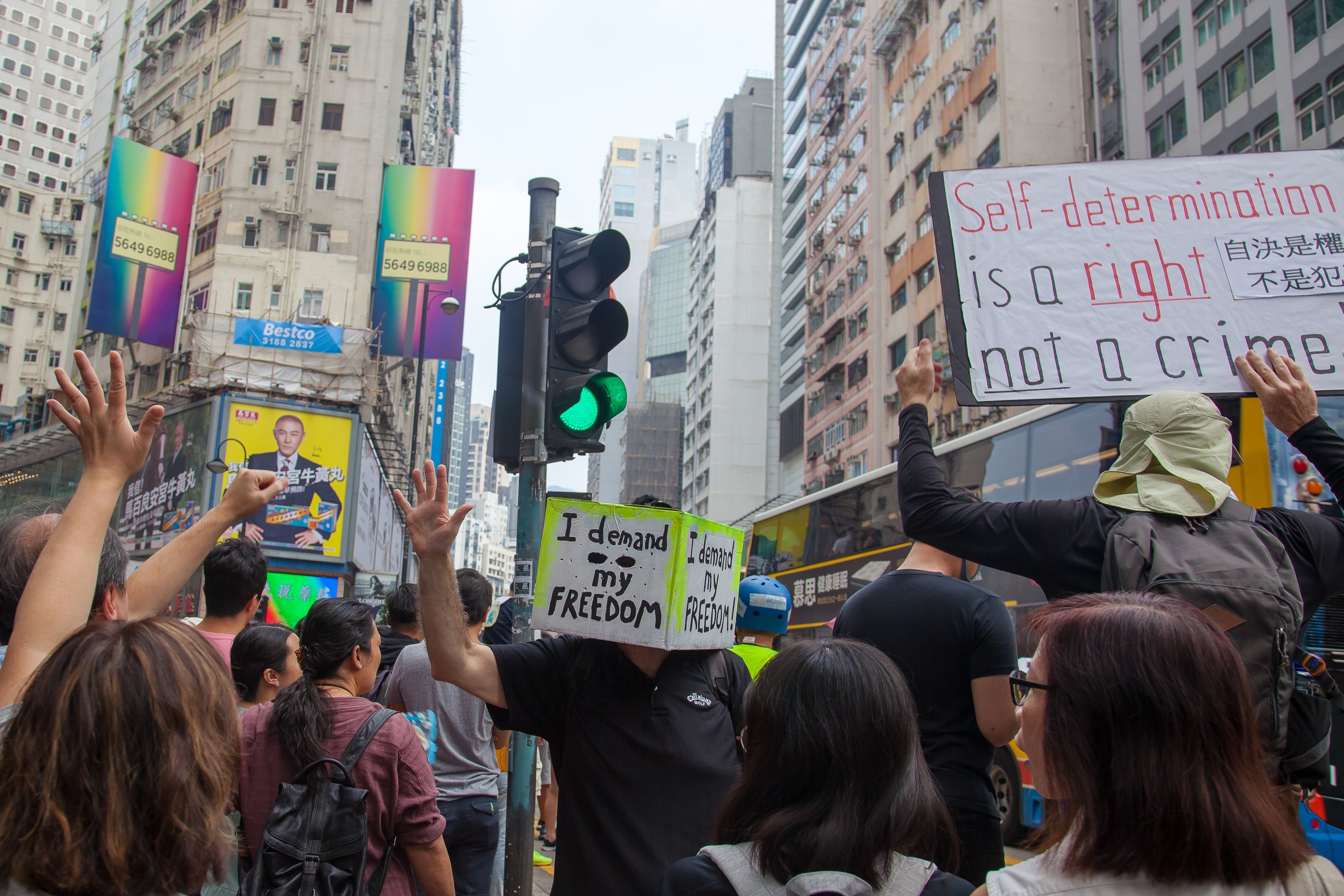China on the Hong Kong Protests: 2 Scenarios

Conditions
The six months of protests in Hong Kong continue unabated and are rooted in China’s imposing its limits on the territory under its “one country, two systems” rule. This illustrates the failure of China to integrate the region, reclaimed in 1997. The protests make daily life in Hong Kong difficult—its airport has twice suspended activity—and has transformed into fights with police, which have now repeatedly used live ammunition. In response, the protesters are radicalising, devastating subway stations and the local parliament building. Police so far have detained more than 2,000 people, who are in danger of high prison sentences. Most of them are students, pupils, and businesspeople. Besides their political demands, such as free elections to Executive Councils (local government), they blame the local authorities for social and economic inequality in Hong Kong, with high property prices the manifestation. The conflict has also affected the region’s economy. The regional authorities have lowered estimates of the region’s GDP growth in 2019 from 2–3% to 0-1%. Income from tourism is falling and—important for China—foreign capital may shift from Hong Kong to Singapore. There is also a risk to China’s plans for the development of the Pearl Delta River, which began in February and involve the economic integration of, among other locations, Shenzhen and Hong Kong, with the latter planned as a financial hub.
Scenarios
Under the current conditions, two scenarios are likely for how China will deal with the Hong Kong protests. These comprise either a partial or full (forceful) application by the region’s authorities of the Emergency Regulations Ordinance (ERO) of 1922. It gives the Chief Executive the possibility to enact regulations to stabilise the situation during a time of a public security threat. The Chief Executive has the right to make decisions about arrests, implement censorship, and other options.
The first scenario, partial application, is already being implemented and involves a gradual reduction of civil liberties. Citing the ERO, Hong Kong’s Executive Council in October prohibited face coverings in public, particularly those used by protesters. Democratic legislators on the Legislative Council who support the demonstrations sued in a local court to have the regulations deemed unconstitutional, but until the court decides, the law is being used as the legal basis of detentions of not just demonstrators but also individuals who cover their faces for different reasons (protect against disease and/or smog). The aim is to intimidate Hongkongers and reduce the number of demonstrators. Later, the Executive Council may limit internet, used by protesters to organise themselves, or even cancel the local elections scheduled for November. China also has implied it is pressuring local and foreign companies (e.g., Hong Kong-based Cathay Pacific airlines) to bar workers from participating in protests. Some comply out of fear of economic repercussions.
The partial scenario also includes the preparation of an offer for young people to help them improve their condition. The authorities want to obtain land from developers where cheap houses can be built. Hong Kong has the means to finance such an operation but the approval of the developers is also needed, and so far, they do not want to increase the number of apartments being built, hoping for a future increase in property prices. The Chinese authorities are ready to offer them land swaps in mainland China where land is state property.
If the partial scenario fails to quell the protests, the Chinese authorities are ready to engage with the full, force scenario, which implies the complete use of the Executive Ordinance. Under it, the organisers of the protests will be detained and taken to isolation camps located near the Chinese border. An unconstitutional ban on freedom of assembly will be enacted in the region. Arrests will be made not just by the Hong Kong police (insufficient) but also units of the People’s Armed Police, which is the part of China’s People’s Liberation Army responsible for suppressing riots. In Hong Kong, established in 1997, is a PLA garrison of about 12,000 soldiers. This scenario could escalate into riots, fatalities, or even civil war.
Conclusions and Perspectives
The first scenario is optimum for China. The partial application of the ERO will be continuously implemented gradually in the coming weeks and months. In China’s view, this will not only pacify the protests but also reduce the likelihood of their resumption. The Chinese authorities hope that as a result of the restrictions the number of protesters will decrease and that the promotion of housing projects will improve the image of the authorities in the eyes of young people. This scenario puts China in a much more positive light than the force option. The guise of legal action and lack of army troops on the streets will reduce the negative effect of the actions in Hong Kong on the Taiwan elections (January 2020), which might be won by a candidate of the Democratic Progressive Party (DPP), which has a negative position towards China. The Hong Kong protests have caused an increase in the polls for the DPP and a decrease for Kuomintang, the nationalist party that is far more preferable for China. The force scenario is less probable, especially before the elections in Taiwan. The possibility of fatalities would put China in a tough political situation. If that happens, it probably would force the EU to intensify cooperation with the U.S. in its strategic competition with China, destroying China’s calculated efforts to convince the Union to oppose the U.S. position. Further, the U.S. Congress and the EU could impose sanctions on China’s authorities and take in protesters who would manage to flee Hong Kong. The force scenario probably would not have significant influence on the U.S. stance in the trade talks with China because President Donald Trump has declared the protests an internal matter for China. Foreign capital, too, would remain in the region if the presence of the Chinese military on the street brings stabilisation and restores the situation to that of prior to the protests.
The force scenario, however, would prevent any kind of compromise and destroy the authorities’ propaganda efforts. Any image gains connected to strengthening Chinese leader Xi Jinping’s position as a determined leader and the CPC as an effective institution would be cut short. Chinese assessments of current U.S. and EU policy towards China shows that the force scenario is not excluded, though. According to the Chinese authorities, the U.S. policy of strategic competition and the EU’s increased pressure on China stem more from a sense of a general threat to their interests and are not mainly connected to the events in Hong Kong. The Chinese authorities appear to believe that in the long term, military intervention in the region would not significantly worsen China’s relations with the EU or the U.S.
Neither scenario respects the “one state, two systems” principle, however. According to the Sino-British Declaration of 1984 and constitutional law (Basic Law, effective since July 1997), China is required to maintain Hong Kong’s separateness, that is, it must preserve the liberal socio-economic system until at least 2047. The Executive Council’s actions limiting assembly by using constitutionally dubious provisions of the 1922 law violate applicable international law, particularly the provisions of the 1984 declaration, among others.
In view of the events in Hong Kong, the EU’s response boils down to calls for China to respect the rights of residents in accordance with the principle of the “one state, two systems” principle. In the event of protracted protests but without military intervention, the EU response will be limited to addressing the matter of Hong Kong during human-rights dialogues, high-level visits, or EU-China summits. However, escalation of the situation will require a stronger position from the EU and the Member States. They might consider taking up the situation in Hong Kong at the UN. In any case, the Union will proceed with caution, considering possible Chinese retaliation, such as a government-inspired consumer boycott or administrative restrictions on EU companies operating in China.



